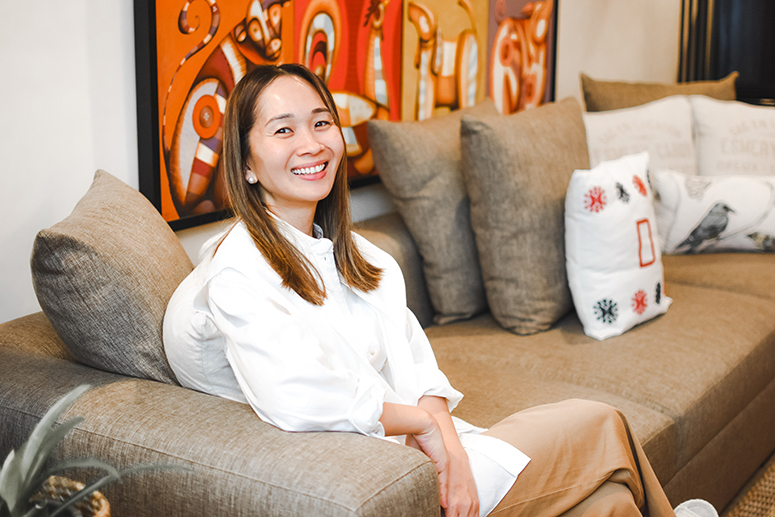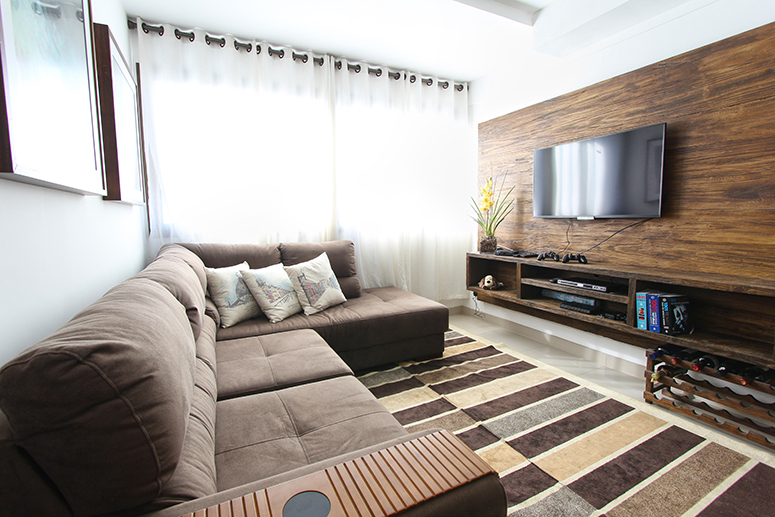You don’t need to have a budget for decluttering and buying pretty storage containers. All one needs to do is to invest the time and effort to begin.
Japanese organizing consultant Marie Kondo opened our eyes to the joys of tidying up. The entire first season of her TV series, Tidying Up with Marie Kondo, streamed on Jan. 1, 2019, and had us all spiraling into a decluttering frenzy for most of the year.
It was supposed to start our long-term love affair with neatness and the return of ‘90s embossing tape.
Then, 2020 came and threw all sorts of plans out the window — without even asking us if they at all sparked joy. Suddenly, decluttering seemed like a trivial pursuit, a hobby for those with time on their hands and money to buy stuff.
But, as we embrace 2021, it looks like Kondo’s methods might be what we need if we are to go through another year of living and working from home — regardless of our houses’ size, households, and salaries.

Property Report PH talks to certified KonMari consultant Christine Dychiao on creating a proper work-from-home set-up, decluttering in a pandemic, and what tidying up does for one’s well-being.
“Clutter is an affliction that is not limited to certain demographics,” says Dychiao, who got her certification in 2018 after attending the KonMari consultant certification course in New York.
She says this in reaction to the notion that KonMari is for the rich and privileged. “While minimalism advocates living with less, or a detachment from possessions, KonMari encourages living among items that spark joy, whatever we truly cherish. If somebody wants to live with just the barest of necessities because that’s what sparks joy for them, and somebody wants to collect books, sneakers, or antiques because that’s what makes them happy, both are encouraged because joy is personal. Decluttering and organizing are for anyone who wants to be freed from being owned by ‘stuff.’ You don’t need to have a budget for decluttering and buying pretty storage containers. All one needs to do is to invest the time and effort to begin.”
THREE HOURS
The beginning is the toughest part, isn’t it?
Dychiao recommends committing at least three hours to declutter one category. Under the KonMari method, one must go through their homes in sections: clothing, books, paper, komono (kitchen, bathroom, garage and miscellaneous), and sentimental items.
The idea is to only keep the things that “spark joy,” a term that remains undefined because it can mean different things to different people. “I realized as I worked on various projects that tidying, organizing, and decorating really are very personal things. If you expect someone to do the entire thing for you and you just be hands-off, there will be no ‘life-changing magic’.
The KonMari rules of tidying are a guide, a way for us to understand who we are at our core by only keeping what sparks joy for us. My philosophy leans toward organizing and decorating our spaces as a form of self-care, inner work rather than just pure aesthetics,” Dychiao says.
JUNK DRAWERS
One of the most common causes of clutter is junk drawers.
Who doesn’t have an entire drawer dedicated to plastic bags, bubble wrap, paper bags, and used gift wrappers that can cast the first stone? These past nine months of quarantine had us clinging to things “for later,” stocking up on supplies we might need, and filling up our cabinets with items we ordered when we were bored.
Dychiao says, “Most items we keep there are stuff we don’t really need, but the stuff we might need ‘one day.’ It is said that clutter is a result of delayed decisions, and that’s true. We tend to decide what to do with certain things, so we relegate them to storage. Another mistake is not having a home for our things. We just dump things wherever it is convenient.
Naturally, that leads to a cluttered looking space, with random objects left or even piled high on surfaces.” She cites the Filipino habit of repurposing plastic containers, jars, and sturdy boxes as a solution — most of the things we need to organize, we already have.
ANCHOR
For most people working from home, this is much easier said than done because on top of setting up a workspace that’s organized, it also has to be presentable enough for virtual meetings and somehow detached from our personal space.
Dychiao recommends identifying an “anchor” object and making that the focus of the workspace. “In meditation, an anchor is a place that we can return to keep our mind from wandering off. Choose your anchoring spot — it can be a desk in your room, the dining table, or living room and stay put. Don’t go around the house deciding to work in various rooms or tables as you feel like it,” she says.
She adds, “When working in your chosen spot, remember that your work desk is a work surface and not a storage area. Only keep what you need for the task at hand. Don’t pile it up with unrelated documents, various notebooks, and a whole mug of pens.
Try to keep the surface clear and clutter-free, and it will do wonders for your focus and productivity. If having a plant, a candle/diffuser, a photo or memento sparks joy for you, then, by all means, decorate your space with them. Just don’t go overboard.”
Not having a separate workspace from your personal space, such as your bed, can have a double-edged effect: productivity falls and so does well-being. “Ideally, we should keep work away from the bedroom, but this is not always possible,” says Dychiao.
“If you live in a condo, or you share a home with others, find your anchor spot, even if it is within your room, and stick to it. Some people choose to set-up space on a couch with a folding table, and that’s fine, too. The key really is having an anchor. The moment you sit on your anchor spot, it will instantly signal to your brain that it’s time to go on work mode.”
For many of us, bringing work into our homes causes a lot of anxiety. While decluttering may seem like a superficial solution, the practice can be the beginning of a fundamental change. This much we can control.
“Many of us don’t realize this, but there is a direct link between clutter and stress, depression, ADHD and productivity. Many studies have sought out to prove this. In 2009, a UCLA study found that the amount of clutter in a family’s home is directly proportional to a woman’s stress/cortisol levels.”

Dychiao adds, “In a study by the Princeton University Neuroscience Institute, researchers found that subjects were more productive, less irritable and distracted in a clutter-free environment versus the disorganized environment where their stress increased.
THE COST OF CLUTTER
“Now is the time to get rid of what no longer serves us so that we can make room for what we want more of in life — space, money, health, time,” Dychiao says.
“Clutter has a cost. It costs us time because we can’t make use of our time productively. We lose money buying things we already have because we can’t find them when we need them or pay penalties or late fees on bills we may have missed out on. Clutter takes a toll on our physical and mental health, and it’s depriving us of space we can make better use of. That junk corner or room can be converted into a study or work area, maybe even your workout space.”
DETERMINE WHAT SPARKS JOY
It’s not easy to determine what sparks joy when you’re constantly surrounded by things that spark anxiety. It might seem like everything is worth keeping, or barely anything is, and that’s okay. As the KonMari method espouses, joy is a personal thing.
What’s important at this time is to be able to create a space that allows us to appreciate the things that matter by freeing ourselves from the things that don’t.
